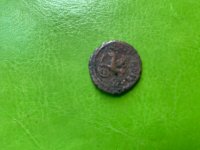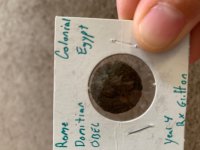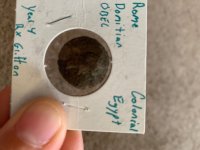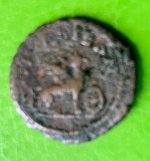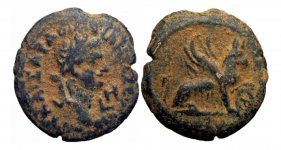coinsareawesome
Bronze Member
- Apr 6, 2013
- 1,028
- 263
- Detector(s) used
- Ace-250
- Primary Interest:
- All Treasure Hunting
Hey guys! My cousin bought this coin at a yard sale a few days ago and she wants to know more about it. I've been trying to use specific keywords such as Domitian and phoenix (since that's what the reverse picture appears to be). However, I have not been able to find a decent match, and I was hoping you guys would be able to help me out yet again.
